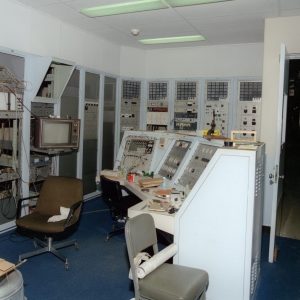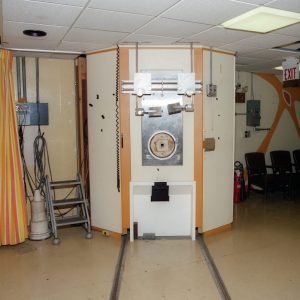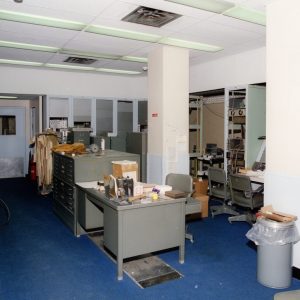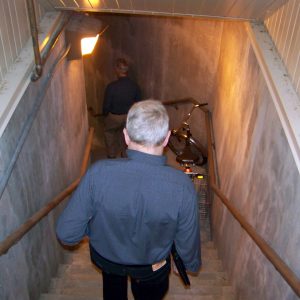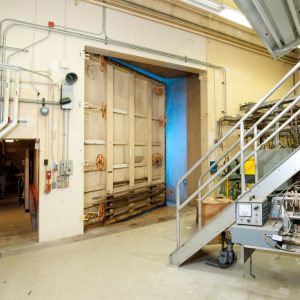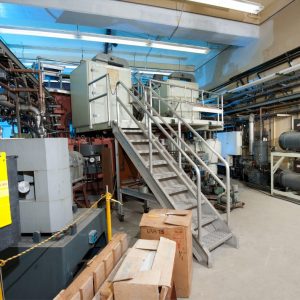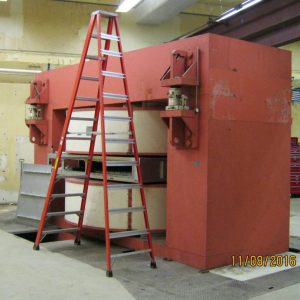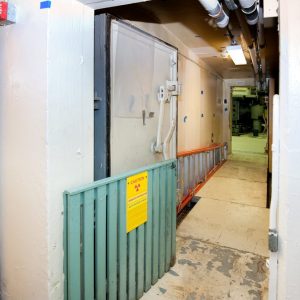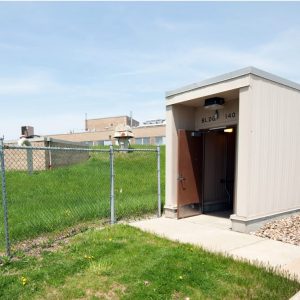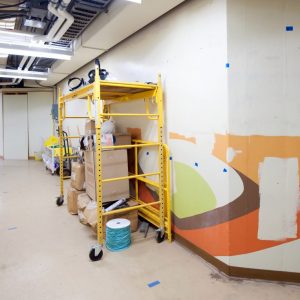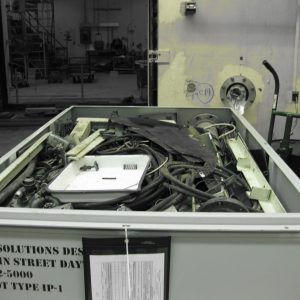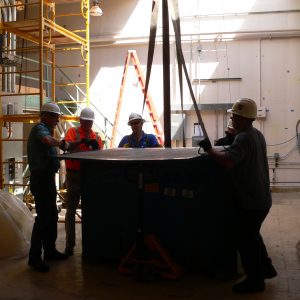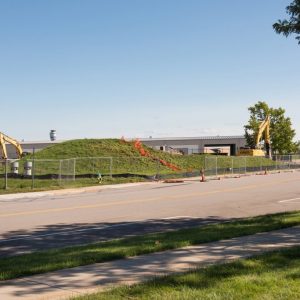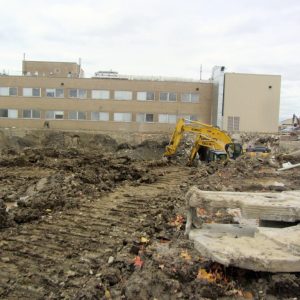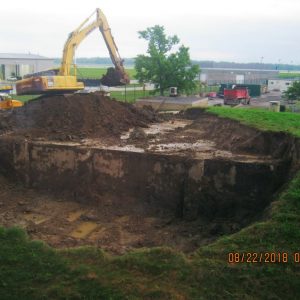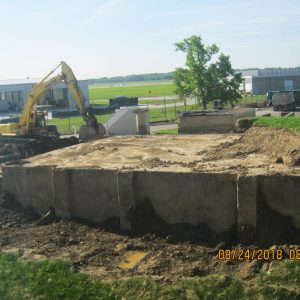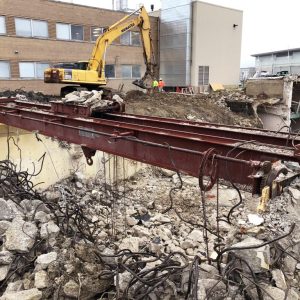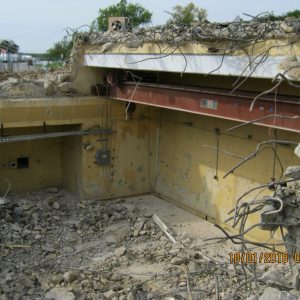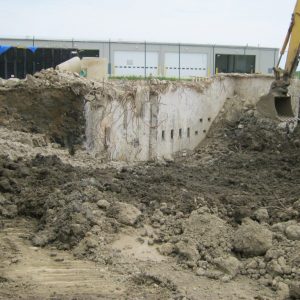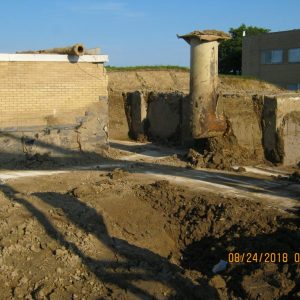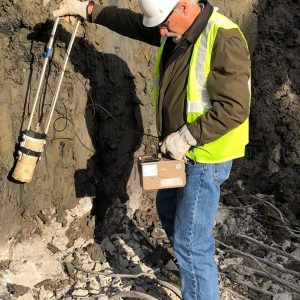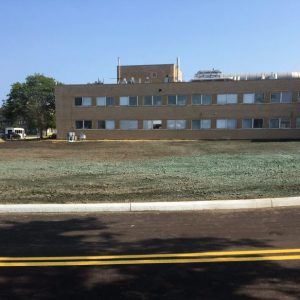Final Years
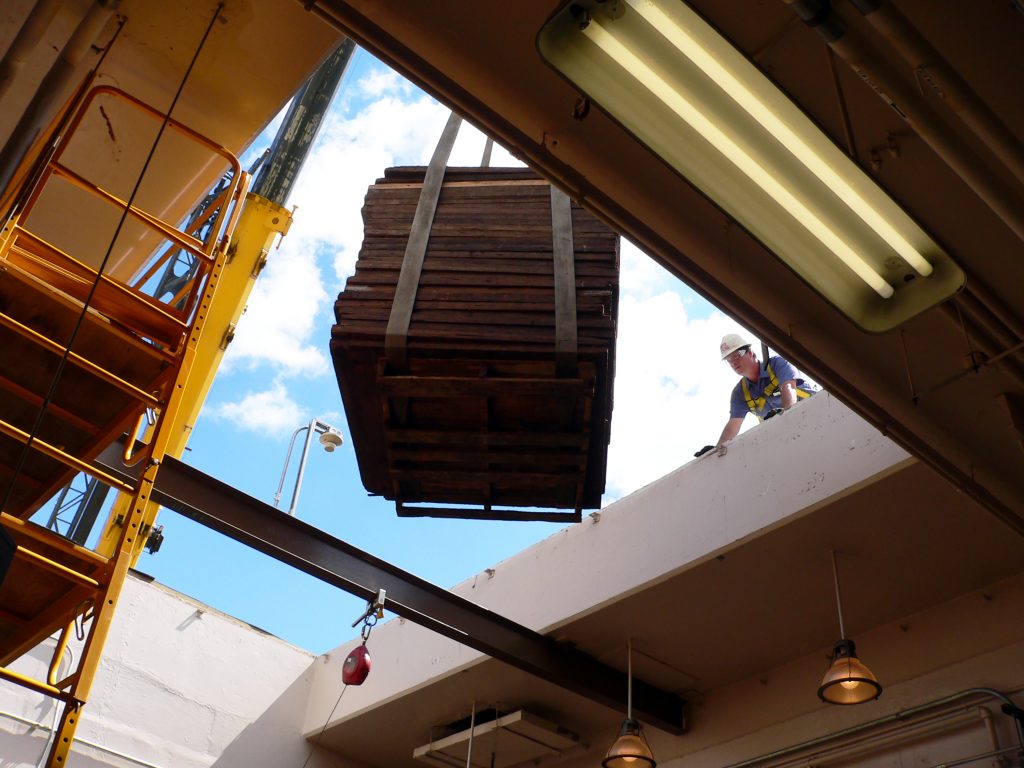
In the early 1990s the center deactivated the Cyclotron and began taking steps to decontaminate and safeguard the Cyclotron Facility.
Overview
After weathering NASA’s downsizing in the 1970s, Lewis Research Center reestablished itself in the 1980s as a stable research laboratory with ties to new NASA programs such as the space station power system and Shuttle-Centaur. As such, it began cutting ties to programs with non-NASA institutions.
As the Cleveland Clinic’s Neutron Therapy Program wound down, center management decided to permanently shut down the cyclotron. Several years were spent removing equipment and performing decontamination work. In the 2000s, the center felt pressure from both NASA and the Nuclear Regulatory Commission (NRC) to remove the cyclotron. The Cyclotron Facility was demolished in 2018.
Mothballing the Cyclotron Facility
In December 1990, the Cleveland Clinic completed its final rounds of cancer treatment using fast neutrons from the Cyclotron. Lewis immediately implemented a plan to decontaminate the Cyclotron Facility and place the accelerator in a safe storage mode. Technicians performed thorough radiological surveys and decontaminated areas by wiping or sanding down surfaces.
Personnel removed loose equipment and liquids, including draining the large water barriers to the Vault Room. In addition, the center undertook structural improvements to the facility such as rehabbing the ventilation and heating systems. The actual cyclotron and beam equipment, which were highly contaminated, were placed in safe mode.
The center planned on letting the site decay for 50 years, at which point its removal would have been easy. The Health Physics’ personnel monitored the restricted area for the next 25 years.
Decision to Decommission
In the early 2000s, however, the NRC developed an integrated plan for decommissioning nuclear facilities and began urging institutions across the nation to eliminate unused nuclear facilities. The NRC also expanded the definition of byproduct material, which brought the cyclotron under NRC purview and licensure. NASA considered it a liability to continue possession of radioactive sources without an intended purpose.
The center, which had been renamed Glenn Research Center—was already decommissioning the Plum Brook Reactor Facility. This process coincided with a NASA policy that sought to systematically eradicate under-used facilities and structures. During a visit to the Cyclotron Facility in November 2007, center officials informed NRC officials that they wanted to decommission the facility.
Demolition would eliminate the cost of maintaining its NRC license and continued monitoring and upkeep of an unused facility, while contributing to the desired downsizing of NASA structures.
In early 2008, the center formally initiated the decommissioning process when it amended its NRC license to add possession of the activated cyclotron facility infrastructure, which triggered relevant decommissioning regulations. In 2010, Glenn sponsored a radiological characterization study, which provided detailed samples from land areas above the building, sites throughout the building, surfaces, soil, water, concrete, and building surfaces.
Documents
Decommissioning and Demolition
Section 106 of the National Historic Preservation Act requires federal agencies to consult with the State Historic Preservation Offices (SHPO) on archaeological work, changes to existing buildings, demolitions, or new construction. The consultation process sometimes results in the need for mitigation or documentation.
Glenn officials concluded, “The materials and research project that was originated for the Cyclotron was cancelled during the conceptual stage, therefore, no significant research was completed at this facility.” Thus, no historical documentation was sent to the SHPO.
Glenn sponsored a second site characterization study and an Environmental Assessment report in 2015, which was open for public review and comment. Crews began actively removing pipes and equipment. In February 2017 the actual cyclotron was removed from the building. A May 2017 Glenn request to amend its license for unrestricted use of the Cyclotron Facility was approved by the NRC on August 15, 2018.
Demolition began in August 2018 and was completed in June 2019. Construction crews demolished the Cyclotron Facility and removed the debris, while Glenn Health Physics staff performed confirmatory soil survey and sampling in the excavated areas.

